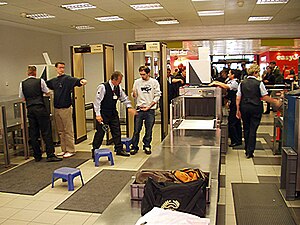It is now official that it was the fault of software which almost got 289 people killed in the bungled Christmas day bombing. Couple of facts have emerged:
- The suspect, Umar Farouk Abdulmutallab, was added to a catch-all terrorism-related database when his father reported concerns about his son's radicalizations and associations. Though his name was not on flight watchlists
- A misspelling of Mr. Abdulmutallab's name initially resulted in the State Department believing he did not have a valid U.S. visa. It seems that his visa could not be revoked earlier because of it
- According to remarks by the President Obama:
- The intelligence community did not agrresively follow up on and priortize stream of intelligence related to possible attack.
- a failure to connect the dots of intelligence that existed across our intelligence community and which, together, could have revealed that Abdulmutallab was planning an attack.
- In sum, the U.S. government had the information -- scattered throughout the system -- to potentially uncover this plot and disrupt the attack. Rather than a failure to collect or share intelligence, this was a failure to connect and understand the intelligence that we already had.
 Image via Wikipedia
Image via WikipediaIt is useless to play the blaming game at this stage as written in this Economist article but what it means that we have to rely more on the intelligence of the software before a terrorist, with all valid documents, tries to board the plane. Yes, there are ways to detect the device at the airport as explained in the Scientific American article - adding unpredictable or layered security screening in future but that will always be a very costly solution if we have to implement in all the airports in this world. I am still not clear about this report released by National Research Council in 2008 which says that data mining is not the most effective way to smoke out terrorists. Yes, there can be issues of false positives which really means that a non-match can be declared as a match but it is always not the case as evident in the Christmas bomber's case.
To me, what really stands out is how/why we fail to connect the dots." as the suspect's name was in an international database indicating "a significant terrorist connection". It is clear that there is a strong need for superior knowledge discovery, database integration, cross-database search and the ability to correalte biographic information with terrorism-related information. I can't imagine doing any of these things without taking semantic technology into consideration. Infact, it should be one of the biggest drivers for any new initiatives in this context!
You might have heard story of David Headley (whose earlier name was Daood Gilani) - he is named as the key architect behind the Mumbai/India attacks in Nomberber 2008 in which 173 people died and 308 were injured. The residents of Mumbai were not as lucky as the passengers on the flight with Umar Farouk Abdulmutallab. David Headley is an American with a Pakistani father and also served as an agent for the Drug Enforcement Agency after being caught twice doing drug dealings. He was an operative of the Pakistan-based terror group Lashkar-e-Taiba. After his arrest by U.S. authorities, Indian officials discovered that he was given a long-term business visa for India. It is also alleged that he was already on a watch list which Indian authorties were not aware of. Indian authorities also say Headley traveled seamlessly between borders and stayed in various hotels in the same city while scouting for targets. What is more shocking is that he came back to India after the Mumbai attacks! This is another case of big failure to connect the dots! There can be many of these in the future also!
Semantic technologies can really help in connecting these dots because OWL/RDF can help build views in a more natural data graph format that is highly expressive and strongly deterministic. It is also more applicable in scenarios like this which places more premium on adaptiveness, agility, flexibility and grounded unambiguous level of truth. It is very useful when you really care to see end-to-end picture of how things are logicaly connected. The consistency can still be maintained while changing and asserting new facts! Inferencing is also a powerful capability which can unearth many new facts.
It is understandable that there are very complex protocols and policies involved in sharing of databases between various agencies around the world but not having the right technology shouldn't be an excuse. Because Semantic technology can be a very good solution to this problem.
I would really like to know your opinion about this. If you have new ideas/thoughts or you are aware of existing work being done in this area then please comment or write directly to me.

![Reblog this post [with Zemanta]](http://img.zemanta.com/reblog_e.png?x-id=beda733f-5485-40e7-8106-dc492bd1d376)
No comments:
Post a Comment